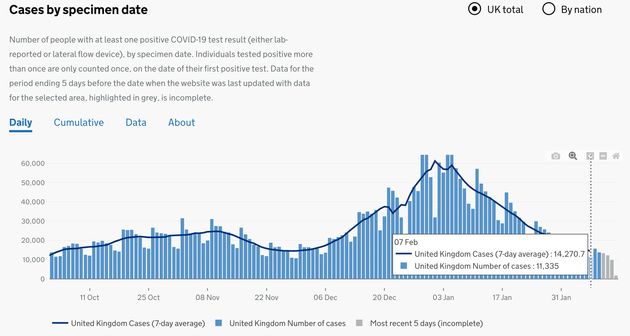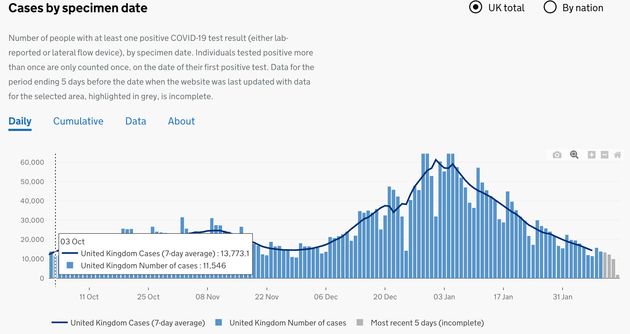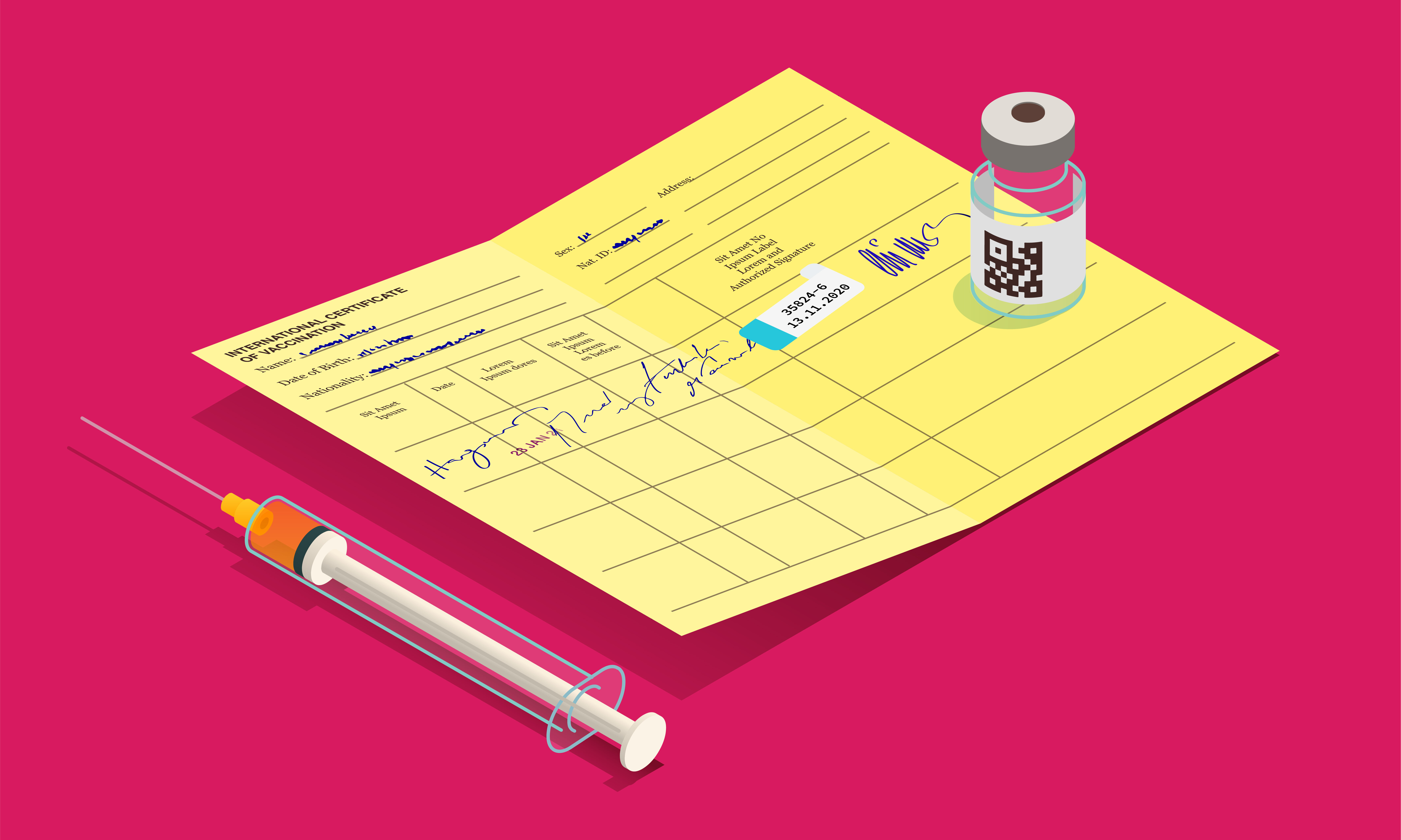New Covid cases have dropped to their lowest level since early October, government figures show.
The average number of daily positive tests in the week up to February 9 was 14,270.7. That’s the lowest weekly average since 13,773.1 in the seven days up to October 3, before the second wave took hold.
The cases are recorded by “specimen date”, that is, the date the positive test was returned, rather than the date it was reported.
It comes as Boris Johnson said on Monday the government would take infection rates into consideration when deciding when lockdown would end.
After revealing he will next week announce dates for sectors of society to reopen, he added: “If, because of the rate of infection, we have to push something off a little bit to the right, to lay it for a little bit, we won’t hesitate to do that.
“I think people would much rather see a plan that was cautious but irreversible and one that proceeds sensibly in accordance with where we are with the disease.”

Figures also show coronavirus case rates have fallen across nearly 95% of local authorities in the UK.
Of the 380 local authorities areas, only 23 (6%) have seen a week-on-week increase in case rates compared with 354 (93%) where the rates have fallen.
The highest case rate in the UK was in Corby, Northamptonshire, with 277 new cases recorded in the seven days to February 10 – the equivalent of 383.6 cases per 100,000 people.
This was down from 468.0 cases per 100,000 people in the seven days to February 3, figures from PA news agency show.
England
-
Of the 315 local areas in England, 12 (4%) have seen a rise in case rates, 301 (95%) have seen a fall, and two are unchanged.
-
The highest week-on-week increase in England was in Copeland, Cumbria, where the rate has risen from 177.5 to 237.6, with 162 new cases.
-
Calderdale in West Yorkshire had the second highest rise, up from 164.1 to 207.1, with 438 new cases.
-
Newark and Sherwood in Nottinghamshire had the third highest, up from 213.2 to 248.3, with 304 new cases.
The figures are based on tests carried out in laboratories (pillar one of the government’s testing programme) and in the wider community (pillar two).

The rate is expressed as the number of new cases per 100,000 people.
Scotland
-
Of the 32 local areas in Scotland, eight (25%) have seen a week-on-week rise in case rates, while 24 (75%) have seen a fall.
-
East Ayrshire had the highest rate in the country, up from 154.9 to 252.4, with 308 new cases.
-
This was followed by Clackmannanshire, which was up from 163.0 to 221.2, with 114 new cases.
-
Stirling had the third highest rise, up from 130.6 to 159.2, with 150 new cases.
It comes as Johnson confirmed more than 15 million people in the UK have now had a first dose of a Covid-19 vaccine.
He also said that in England, jabs have been offered to everyone in the government’s top four priority groups.
The priority list set out by the Joint Committee on Vaccination and Immunisation (JCVI) includes nine categories.
The top priority was care home residents and their carers, followed by people over the age of 80 and frontline health and social care workers.
Wales
-
Of the 22 local areas in Wales, three (14%) have seen a rise in case rates, 18 (82%) a fall, and one has remained the same.
-
Wrexham had the highest rate in Wales, down from 229.5 to 161.1, with 219 new cases.
-
The three areas recording a week-on-week rise were:
-
Powys (up from 84.6 to 120.1, with 159 new cases)
-
Conwy (up from 110.9 to 113.5, with 133 new cases)
-
Cardiff (up from 100.0 to 100.6, with 369 new cases)
-
The third priority group was people aged 75 and over, and the fourth group was people over the age of 70 and those deemed to be “clinically extremely vulnerable”.
Government data up to February 13 shows that of the 15,599,904 jabs given in the UK so far, 15,062,189 were first doses – a rise of 505,362 on the previous day.
Some 537,715 were second doses, an increase of 2,846 on figures released the previous day.
Northern Ireland
-
All of the 11 local areas in Northern Ireland have seen a drop in case rates.
-
The highest rate was in Mid Ulster, which was down from 301.6 in the week to February 3 to 234.3 in the seven days to February 10, with 348 new cases.
-
The biggest drops were in Armagh City, Banbridge and Craigavon, where the rate fell from 283.1 to 207.2, with 448 new cases.



